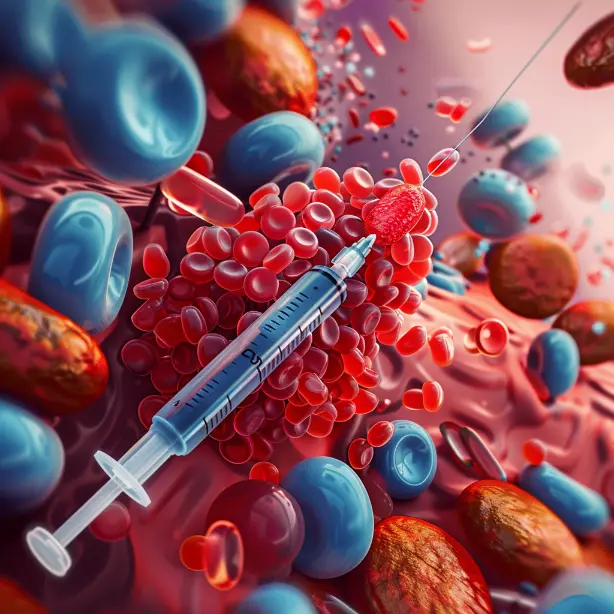Anabolic steroids, widely used by athletes and bodybuilders to enhance performance and build muscle mass, come with a range of potential side effects, many of which target the liver. The liver plays a central role in metabolizing these substances, which can lead to various degrees of liver damage if not properly managed. This article explores the specific damages caused by anabolic steroids on the liver and underscores the importance of liver support supplementation to mitigate these effects.
Understanding the Liver’s Role in Steroid Metabolism
The liver is the body’s primary detoxification center, responsible for processing and eliminating various substances, including anabolic steroids. When steroids are ingested or injected, they are metabolized by the liver, where enzymes break them down into active and inactive forms. This process can generate harmful byproducts and put significant stress on the liver, leading to potential damage.
Types of Liver Damage Caused by Anabolic Steroids
- Hepatotoxicity (Liver Toxicity)
- Mechanism: Oral anabolic steroids, such as methandienone (Dianabol) and oxandrolone (Anavar), are particularly hepatotoxic because they are alkylated at the 17-alpha position to survive first-pass metabolism in the liver. This modification allows them to be effective when taken orally but also makes them more difficult for the liver to break down, leading to toxicity.
- Consequences: Hepatotoxicity can manifest as elevated liver enzymes (ALT, AST), indicating liver stress or damage. In severe cases, this can progress to liver fibrosis, cirrhosis, or even liver cancer. Symptoms may include jaundice, fatigue, and abdominal pain.
- Cholestasis
- Mechanism: Cholestasis is a condition characterized by impaired bile flow, which can be induced by certain anabolic steroids. This occurs when the liver’s ability to produce or excrete bile is hindered, leading to the accumulation of bile acids in the liver.
- Consequences: Cholestasis can cause symptoms such as jaundice, dark urine, pale stools, and intense itching. If left untreated, it can lead to more severe liver damage and systemic complications.
- Peliosis Hepatis
- Mechanism: Peliosis hepatis is a rare but serious condition associated with anabolic steroid use, particularly long-term use. It involves the formation of blood-filled cysts in the liver. The exact mechanism is not fully understood, but it is thought to be related to the liver’s response to prolonged exposure to toxic substances.
- Consequences: These cysts can rupture, leading to internal bleeding, which can be life-threatening. This condition is often asymptomatic until significant damage has occurred, making it particularly dangerous.
- Liver Tumors
- Mechanism: Long-term use of anabolic steroids can increase the risk of developing liver tumors, including hepatocellular carcinoma (a primary liver cancer) and benign liver adenomas. The mechanism involves the alteration of liver cell DNA by the toxic metabolites of steroids.
- Consequences: Liver tumors can be asymptomatic or cause symptoms similar to other liver conditions, such as abdominal pain or fullness. If the tumor is malignant, it can spread to other parts of the body, requiring aggressive treatment.
The Importance of Liver Support Supplementation
Given the potential for significant liver damage from anabolic steroid use, liver support supplementation is essential for those who choose to use these substances. Proper liver support can help mitigate the toxic effects of steroids, protect liver cells, and promote liver regeneration and recovery.
Scenarios Where Liver Support is Crucial:
- During an Anabolic Steroid Cycle
- Why: To protect the liver from the ongoing stress and damage caused by the metabolism of anabolic steroids. Liver support supplements can help reduce the accumulation of toxic byproducts and enhance the liver’s ability to process and eliminate these substances.
- What to Use: Supplements like LiverGuard, Milk Thistle (Silymarin), N-Acetylcysteine (NAC), and TUDCA (Tauroursodeoxycholic Acid) are particularly effective. Milk Thistle has hepatoprotective properties, NAC boosts glutathione levels (a key antioxidant in the liver), TUDCA supports bile flow and reduces cholestasis risk. LiverGuard provides HIGH DOSES of Choline, Inositol, Taurine and Methionine, which support overall liver regeneration (self- healing process for replacement of dead and damaged cells with new ones).
- Post-Cycle Therapy (PCT)
- Why: After completing a steroid cycle, the liver needs time and support to recover from the stress and damage it has endured. PCT often includes drugs that can further stress the liver, making liver support supplementation even more critical.
- What to Use: Continuing with LiverGuard, Milk Thistle, NAC, and TUDCA during PCT is advisable. Additionally, antioxidants like Alpha-Lipoic Acid (ALA) can help reduce oxidative stress and support liver regeneration.
- For Long-Term Steroid Users
- Why: Chronic use of anabolic steroids significantly increases the risk of long-term liver damage, including fibrosis, cirrhosis, and liver cancer. Ongoing liver support is necessary to manage this risk.
- What to Use: Long-term liver support should include a combination of hepatoprotective (like Milk Thistle) and regenerative supplements- LiverGuard. In addition Artichoke Extract and Schisandra Berry can be beneficial for their liver-detoxifying and regenerative properties.
Conclusion
The liver plays a central role in the metabolism of anabolic steroids, making it highly susceptible to damage from these substances. Hepatotoxicity, cholestasis, peliosis hepatis, and liver tumors are serious risks associated with steroid use. Liver support supplementation is not just beneficial but necessary for anyone using anabolic steroids to protect against these dangers and support liver health.
Proper supplementation during and after steroid cycles, along with regular monitoring of liver function, can help mitigate the risks and promote recovery. Athletes and bodybuilders must prioritize liver health to ensure long-term well-being and continued athletic performance.
Resources:
- Saller, R., Meier, R., & Brignoli, R. (2001). The use of silymarin in the treatment of liver diseases. Drugs, 61(14), 2035-2063. DOI: 10.2165/00003495-200161140-00003
- Kelly, G. S. (1998). Clinical applications of N-acetylcysteine. Alternative Medicine Review, 3(2), 114-127. DOI: 10.1016/S0022-3476(00)46927-7
- Packer, L., Witt, E. H., & Tritschler, H. J. (1995). Alpha-lipoic acid as a biological antioxidant. Free Radical Biology and Medicine, 19(2), 227-250. DOI: 10.1016/0891-5849(95)00017-R
- McCallum, C. L., George, J., & Payne, A. J. (2015). The therapeutic potential of tauroursodeoxycholic acid: A mini-review. Journal of Gastroenterology and Hepatology Research, 4(11), 1783-1787. DOI: 10.17554/j.issn.2224-3992.2015.04.595
- Hartgens, F., & Kuipers, H. (2004). Effects of androgenic-anabolic steroids in athletes. Sports Medicine, 34(8), 513-554. DOI: 10.2165/00007256-200434080-00003
- Silva, L. M., Silva, G. F., & Santos, L. H. (2018). The hepatotoxicity of anabolic androgenic steroids: A review. Toxicology, 399, 31-42. DOI: 10.1016/j.tox.2018.03.004















